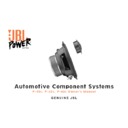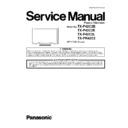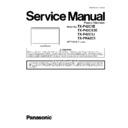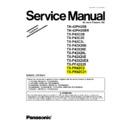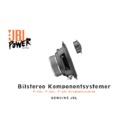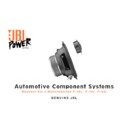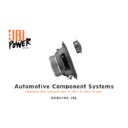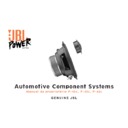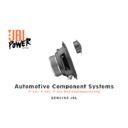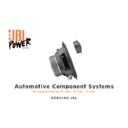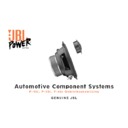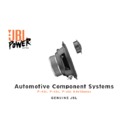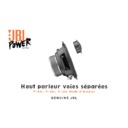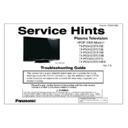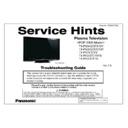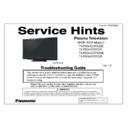JBL P42c (serv.man8) User Manual / Operation Manual ▷ View online
05
Component Placement
Because of the JBL Component System’s
small size and extremely versatile moun-
ting options, there are an almost infinite
number of placement options to achieve
excellent sound quality in any vehicle.
Please consider the following statements
to help you get the most from your
system.
1. The most spacious stereo image is
achieved when the left and right speaker
systems are placed as far apart as
possible.
2. The best center image will be achieved
when the distance from the left speaker
and the right speakers are as equal as
possible from your listening position.
This is most easily achieved by placing
the speakers as far forward as possible.
3. Treble is directional in nature. This
means that high frequencies are reduced
as you move off the tweeter's axis. The
angle mounts will allow the tweeters to
be pointed across the car to the listener
on the opposite side. This will make each
listener slightly off-axis to the tweeter
that is closest to that listener, which helps
to compensate for the fact that the
listener is always closer to one tweeter
than to the other (see Figure 6).
The best system integration is achieved
when the tweeter is mounted close to the
midwoofer speaker. This helps smooth
the transition from the midrange and
tweeter at the crossover point.
Choosing mounting locations that satisfy
all of the above criteria will provide the
most satisfying performance.
small size and extremely versatile moun-
ting options, there are an almost infinite
number of placement options to achieve
excellent sound quality in any vehicle.
Please consider the following statements
to help you get the most from your
system.
1. The most spacious stereo image is
achieved when the left and right speaker
systems are placed as far apart as
possible.
2. The best center image will be achieved
when the distance from the left speaker
and the right speakers are as equal as
possible from your listening position.
This is most easily achieved by placing
the speakers as far forward as possible.
3. Treble is directional in nature. This
means that high frequencies are reduced
as you move off the tweeter's axis. The
angle mounts will allow the tweeters to
be pointed across the car to the listener
on the opposite side. This will make each
listener slightly off-axis to the tweeter
that is closest to that listener, which helps
to compensate for the fact that the
listener is always closer to one tweeter
than to the other (see Figure 6).
The best system integration is achieved
when the tweeter is mounted close to the
midwoofer speaker. This helps smooth
the transition from the midrange and
tweeter at the crossover point.
Choosing mounting locations that satisfy
all of the above criteria will provide the
most satisfying performance.
Figure 6
System Design
There are a variety of system options
available with the Component System.
The simplest configuration is to use them
full range with their built-in passive
crossovers by connecting them to the
output of a head unit or an amplifier
(Figures 7 and 8).
A more advanced system design can be
achieved by adding a Decade,™ GT,
Power, GTi, or equivalent subwoofer to
your component system. In this case the
component system will be used as high
and midbass frequency drivers and
should have their extremely low frequen-
cies blocked by electrical means. Active
or passive crossovers can be used in
order to achieve the best system fidelity
and widest dynamic range. Crossover
frequency recommendations are given
inthe Specifications.
available with the Component System.
The simplest configuration is to use them
full range with their built-in passive
crossovers by connecting them to the
output of a head unit or an amplifier
(Figures 7 and 8).
A more advanced system design can be
achieved by adding a Decade,™ GT,
Power, GTi, or equivalent subwoofer to
your component system. In this case the
component system will be used as high
and midbass frequency drivers and
should have their extremely low frequen-
cies blocked by electrical means. Active
or passive crossovers can be used in
order to achieve the best system fidelity
and widest dynamic range. Crossover
frequency recommendations are given
inthe Specifications.
Left
Channel
Power
Tweeters
Power component system
connected to speaker outputs of
a high powered head unit
Power
Midwoofers
Left
Right
Channel
Right
Amplifier output
set at full range or
high passed at f > 80Hz
Left
Channel
Power
Tweeters
Power component system
connected to amplifier
Power
Midwoofers
Left
Right
Figure 8
Figure 7
Owner’
s Manual
Power
Tweeters
Power
Midwoofers
Power component system
connected to speaker outputs of
a high powered head unit
Power component system
connected to amplifier
Power
Tweeters
Power
Midwoofers
06
Installation Warnings
and Tips
and Tips
• Be careful not to cut or drill into fuel
tanks, fuel lines, brake or hydraulic lines,
vacuum lines or electrical wiring when
working on your vehicle. Inspect behind
panels before you cut or drill.
• Make sure that the midwoofer will
physically fit in the mounting location. If
door mounting, check for adequate
clearance with the window in both rolled-
up and rolled-down positions as well as
for interference with window crank and
power window mechanism.
If mounting elsewhere, check for
clearance around rear deck torsion bars,
glove box or other structural elements.
• Do not mount speakers where water
may splash on the cones.
• Make sure that it will be easy to run
connecting wires to the speakers. Trace
speaker wire paths before you undertake
mounting.
• Always disconnect the ground wire from
the battery before doing any work on the
vehicle.
tanks, fuel lines, brake or hydraulic lines,
vacuum lines or electrical wiring when
working on your vehicle. Inspect behind
panels before you cut or drill.
• Make sure that the midwoofer will
physically fit in the mounting location. If
door mounting, check for adequate
clearance with the window in both rolled-
up and rolled-down positions as well as
for interference with window crank and
power window mechanism.
If mounting elsewhere, check for
clearance around rear deck torsion bars,
glove box or other structural elements.
• Do not mount speakers where water
may splash on the cones.
• Make sure that it will be easy to run
connecting wires to the speakers. Trace
speaker wire paths before you undertake
mounting.
• Always disconnect the ground wire from
the battery before doing any work on the
vehicle.
CAUTION: Fuel tanks are located
directly beneath the rear deck in
some cars. Check for adequate speaker
basket clearance before considering this
location!
directly beneath the rear deck in
some cars. Check for adequate speaker
basket clearance before considering this
location!
A Note on Power Handling
As a result of their high efficiency, all JBL
loudspeakers will produce reasonable vol-
ume levels in the automotive environ-
ment using very little amplifier power.
However, the use of a small amplifier to
attain very high volume levels could lead
to over-driving the amplifier. This will
generate high distortion levels which can
easily damage loudspeakers, even if the
rated power of the amplifier is below the
rated maximum power handling of the
loudspeaker!
As a general rule, do not turn up the vol-
ume control past the point where you
hear distortion in the form of either signal
distortion from an overdriven amplifier or
mechanical noise from an overstressed
speaker.
For the best performance and system reli-
ability, you should select an amplifier with
an output rating greater than the
maximum power likely to be used to gen-
erate the desired volume levels.
If you want your system “Loud + Clear,”
we suggest that you step up to a JBL
power amplifier which has an RMS power
rating equal to, but not exceeding the
Maximum Recommended Amplifier
Power listed in the specifications of your
specific JBL speaker. This margin of
reserve power will ensure that the ampli-
fier will not attempt to deliver more
power than its design allows. Your dealer
will be happy to point out which high
power JBL amplifiers are optimum for
your application and listening habits.
Following these guidelines will provide
virtually distortion-free sound reproduc-
tion and long loudspeaker life.
loudspeakers will produce reasonable vol-
ume levels in the automotive environ-
ment using very little amplifier power.
However, the use of a small amplifier to
attain very high volume levels could lead
to over-driving the amplifier. This will
generate high distortion levels which can
easily damage loudspeakers, even if the
rated power of the amplifier is below the
rated maximum power handling of the
loudspeaker!
As a general rule, do not turn up the vol-
ume control past the point where you
hear distortion in the form of either signal
distortion from an overdriven amplifier or
mechanical noise from an overstressed
speaker.
For the best performance and system reli-
ability, you should select an amplifier with
an output rating greater than the
maximum power likely to be used to gen-
erate the desired volume levels.
If you want your system “Loud + Clear,”
we suggest that you step up to a JBL
power amplifier which has an RMS power
rating equal to, but not exceeding the
Maximum Recommended Amplifier
Power listed in the specifications of your
specific JBL speaker. This margin of
reserve power will ensure that the ampli-
fier will not attempt to deliver more
power than its design allows. Your dealer
will be happy to point out which high
power JBL amplifiers are optimum for
your application and listening habits.
Following these guidelines will provide
virtually distortion-free sound reproduc-
tion and long loudspeaker life.
WARNING: Playing loud music over
120dB can permanently damage your
hearing. The maximum volume levels
achievable with JBL components and
high power amplification may exceed
safe levels for extended listening.
When listening at high volume levels,
always use hearing protection or turn the
volume down!
120dB can permanently damage your
hearing. The maximum volume levels
achievable with JBL components and
high power amplification may exceed
safe levels for extended listening.
When listening at high volume levels,
always use hearing protection or turn the
volume down!
07
Specifications
Component Systems
Model
P-62c
P-52c
P-42c
Power Series Automotive
Power Series Automotive
Power Series Automotive
6-1/2" 2-Way Component
5-1/4" 2-Way Component
4" 2-Way Component
System
System
System
1/2" titanium-composite
1/2" titanium-composite
1/2" titanium-composite
neodymium magnet tweeter.
neodymium magnet tweeter.
neodymium magnet tweeter.
Surface- and flush-
Surface- and flush-
Surface- and flush-
mounting brackets supplied
mounting brackets supplied
mounting brackets supplied
Injection-molded titanium-
Injection-molded titanium-
Injection-molded titanium-
composite woofer cone
composite woofer cone
composite woofer cone
with butyl-rubber surround
with butyl-rubber surround
with butyl-rubber surround
Speaker Impedance
4 Ohms
4 Ohms
4 Ohms
Recommended Amplifier
10 – 200 Watts RMS
10 – 175 Watts RMS
10 – 150 Watts RMS
Power Range
Frequency Response
45Hz – 22kHz
55Hz – 22kHz
65Hz – 22kHz
Sensitivity
90dB
89dB
89dB
Mounting Depth
Drop In:
Drop In:
2-3/16"
2-7/8"
1-7/8"
Bottom Mount:
2-9/16"
2-1/2"
2"
Owner’
s Manual
JBL Consumer Products
250 Crossways Park Drive
Woodbury, NY 11797
800-336-4JBL (4525)
www.jbl.com
250 Crossways Park Drive
Woodbury, NY 11797
800-336-4JBL (4525)
www.jbl.com
Part No.POWSYSOM
Made in USA
Made in USA
A Harman International Company
C
E
L E
B R A T I
N
G
5
0
Y E A
R
S
Declaration of Conformity
We, Infinity Systems A/S
Kongevejen 194B
DK-3460 Birkerød
DENMARK
DK-3460 Birkerød
DENMARK
declare in own responsibility, that the product described
in the owner's manual is in compliance with technical
standards:
EN 50 081-1/1992
EN 50 082-1/3.1995
Steen Michaelsen
Infinity Systems A/S
Birkerød. DENMARK. 03/98
Display

